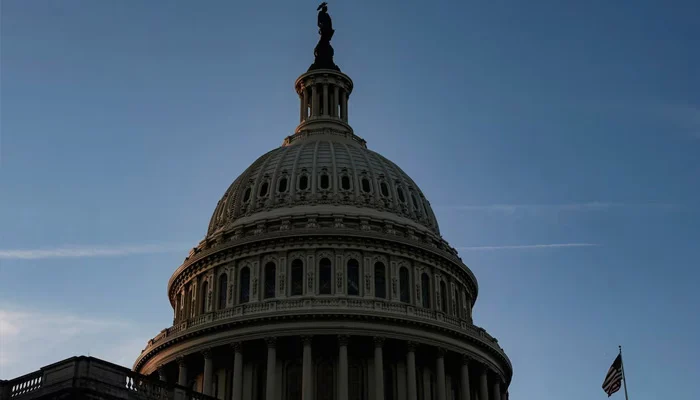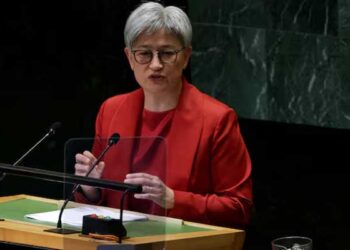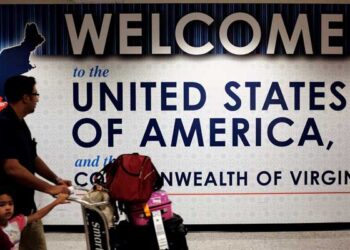Select Language:
On October 2, 2025, the U.S. Capitol dome appears shadowed in a photo taken amid a partial government shutdown in Washington, D.C. — Reuters
– Trump halts at least $28 billion in funds allocated for Democratic-led regions.
– Pritzker criticizes this move as akin to hostage-taking.
– An effort in the Senate to reopen the government fails as both parties dig in their heels.
The Biden administration froze $2.1 billion in Chicago transit funds on Friday, depriving a Democratic city of crucial resources as a failed Senate attempt to end the shutdown unfolded.
As the shutdown entered its third day, President Trump intensified his pressure on Democrats to accept a Republican proposal that would reestablish federal funding. However, the bill fell short in the Senate with a vote of 54-44, needing 60 votes to pass, ensuring the shutdown would persist into at least Monday.
Since the start of the shutdown, federal agencies have frozen over $28 billion in funding directed toward Democratic-majority cities and states, reflecting a broader strategy by Trump to leverage federal powers to penalize political opponents. Budget Director Russ Vought explained that the Chicago transit funds, designated for elevated train lines, were withheld to prevent them from being awarded through race-based contracting practices.
Trump has frequently targeted Chicago, the nation’s third-largest city, often criticizing its policies and even threatening to deploy National Guard troops to the city.
Illinois Governor JB Pritzker, a prominent Trump critic and potential 2028 presidential contender, denounced the funding freeze as hostage-taking. “This effort to score political points is harming our economy and the hardworking individuals who depend on public transportation,” he said on social media.
The White House indicated more funds, possibly from Portland, Oregon—a city notable for protests during Trump’s first term—could also be withheld. Trump has threatened to dismiss additional federal employees beyond the 300,000 already sidelined this year, with several agencies submitting proposals for workforce reductions, a White House source revealed anonymously.
### Concerns Over ‘Bad-Faith Environment’
Many Republicans support Trump’s tactics, viewing them as strategic pressure, despite concerns about infringing on Congress’s constitutional authority over federal spending. Trump and his allies have also posted social media images mocking Democratic opponents with caricatures like mustaches and sombreros.
House Speaker Mike Johnson, a Republican, acknowledged that Trump is trying to influence negotiations and expressed approval. “He’s definitely applying pressure, and I support that,” Johnson said.
However, others warn that such tactics are fueling a bad-faith atmosphere, complicating negotiations to reopen the government. Senator Thom Tillis, also a Republican involved in informal talks, noted, “These kinds of cuts make it harder to reach a deal, as they undermine trust,” and has decided not to run for re-election next year.
So far, the freeze has targeted programs promoting green energy and transit—areas typically favored by Democrats—and has also attempted to cut counterterrorism funds for Democratic-majority states. A court temporarily blocked some of these reductions, and Trump restored nearly $187 million to New York on Friday.
### No Quick End in Sight
Congressional negotiations remained stalled as both chambers rejected the latest funding proposals—including a Republican plan and a Democratic alternative—and adjourned until Monday. The House will be out of session all next week, limiting the chance for legislative action to resolve the impasse.
If the shutdown extends beyond Monday, it will become the fourth-longest in U.S. history, surpassing the 35-day shutdown in 2018-2019 during Trump’s first term.
Despite Trump’s efforts, only three Senate Republicans voted in favor of the current funding bill, which proposes extending government funding through November 21. Democrats, meanwhile, emphasize the need to include provisions to renew pandemic-era healthcare subsidies, which are set to expire at year’s end, a measure supported strongly by the public.
Currently, around $1.7 trillion in federal funds are frozen, covering roughly a quarter of annual government spending. The rest primarily funds health, retirement programs, and interest on the national debt, now totaling $37.5 trillion.
### Impact on Federal Services
The shutdown, the 15th since 1981, has suspended scientific research, financial oversight, and numerous other activities. Approximately 2 million federal employees are furloughed without pay, although essential personnel like military members and airport security remain on duty.
On Friday, the government held back its monthly jobs report, leaving markets uncertain about the economy’s health.
A prolonged shutdown could disrupt airline travel, food assistance for millions, and could force federal courts to close. Federal workers risk missing their regular paychecks in mid-October if the deadlock persists.







